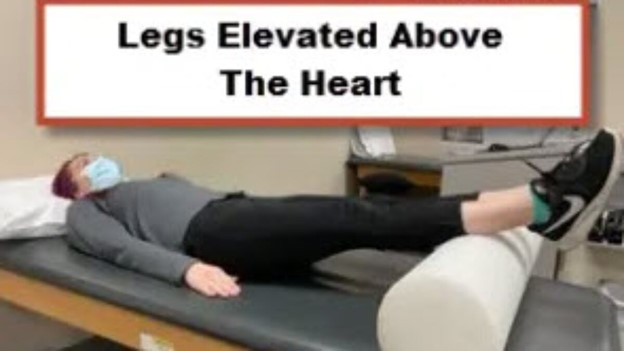A nurse is collecting data from a school-age child who has bacterial meningitis. Which of the following findings should the nurse expect? (Select all that apply.)
Headache.
Negative Kernig sign.
Vomiting.
Seizures.
Tinnitus.
Correct Answer : A,B,C,D
Choice A rationale:
Headache is an expected finding in a school-age child with bacterial meningitis. Bacterial meningitis is an inflammation of the meninges, and the membranes surrounding the brain and spinal cord, often caused by bacteria. The inflammatory process can lead to increased intracranial pressure, which commonly presents as a headache. This headache is often severe and can be accompanied by other symptoms like fever, irritability, and sensitivity to light.
Choice B rationale:
A negative Kernig sign is a possible finding in a school-age child with bacterial meningitis. Kernig sign is a clinical test performed to assess for meningitis. A positive Kernig sign is characterized by resistance and pain in extending the knee when the hip is flexed at a 90-degree angle. However, a negative Kernig sign does not rule out meningitis, as it might not always be present.
Choice C rationale:
Vomiting is an expected finding in a school-age child with bacterial meningitis. The increase in intracranial pressure due to inflammation of the meninges can lead to nausea and vomiting. The vomiting is often projectile and may not be relieved by eating or drinking.
Choice D rationale:
Seizures are an expected finding in a school-age child with bacterial meningitis. The inflammation of the brain and meninges can irritate the brain tissue and trigger seizures. Seizures in the context of bacterial meningitis might be generalized or focal in nature.
Choice E rationale:
Tinnitus (ringing in the ears) is not a typical finding associated with bacterial meningitis. The main symptoms of bacterial meningitis are related to the central nervous system and meningeal irritation, such as headache, fever, neck stiffness, and neurological changes. Tinnitus is not a common manifestation of bacterial meningitis and is not part of the typical clinical picture.
Nursing Test Bank
Naxlex Comprehensive Predictor Exams
Related Questions
Correct Answer is B
Explanation
Choice A rationale:
Decrease daily oral fluid intake. Rationale: This choice is not appropriate for a client experiencing a vaso-occlusive crisis in sickle cell anemia. In this crisis, there is a risk of dehydration due to increased fluid loss, and decreasing oral fluid intake would exacerbate this issue. Adequate hydration is important to prevent further sickling of red blood cells and maintain organ perfusion.
Choice B rationale:
Maintain bed rest to prevent hypoxemia. Rationale: This is the correct choice. During a vaso-occlusive crisis in sickle cell anemia, blood flow to certain tissues is restricted, leading to tissue hypoxia and pain. Bed rest is recommended to reduce metabolic demands and oxygen consumption, helping to prevent further tissue damage and improve oxygenation. It also reduces the risk of complications such as thrombosis and respiratory compromise.
Choice C rationale:
Apply cold compresses to painful joints. Rationale: Applying cold compresses is not a recommended intervention for vaso-occlusive crisis in sickle cell anemia. Cold can exacerbate vasoconstriction and further compromise blood flow to the affected tissues. Warm compresses or warm baths might be more appropriate to promote vasodilation and alleviate pain.
Choice D rationale:
Administer meperidine to eliminate a fever. Rationale: Administering meperidine solely to eliminate a fever is not the primary focus of care for a vaso-occlusive crisis. The priority is to manage pain and improve tissue perfusion. Meperidine is an opioid analgesic that can be used to manage severe pain associated with sickle cell crises, but it should be given with caution due to the risk of respiratory depression and the potential for addiction.
Correct Answer is C
Explanation
Choice A rationale:
Encouraging active range of motion of the extremity is not recommended during the first 12 to 24 hours after a sprained wrist. Early movement can potentially worsen the swelling and delay the healing process.
Choice B rationale:
Applying warm compresses to the extremity is not the best choice to minimize swelling in the initial 12 to 24 hours after a sprained wrist. Heat can actually increase blood flow and promote more swelling in the injured area.
Choice C rationale:
Elevating the extremity above the level of the heart is the correct choice for minimizing swelling in the first 12 to 24 hours after a sprained wrist. Elevating the injured area helps to reduce blood flow to the area, which in turn decreases swelling and promotes healing.

Choice D rationale:
Wrapping the extremity loosely with an elastic bandage might be beneficial for providing support, but it's not the primary intervention for minimizing swelling in the first 12 to 24 hours after a sprained wrist. Elevation is more effective for reducing swelling during this initial period.
Whether you are a student looking to ace your exams or a practicing nurse seeking to enhance your expertise , our nursing education contents will empower you with the confidence and competence to make a difference in the lives of patients and become a respected leader in the healthcare field.
Visit Naxlex, invest in your future and unlock endless possibilities with our unparalleled nursing education contents today
Report Wrong Answer on the Current Question
Do you disagree with the answer? If yes, what is your expected answer? Explain.
Kindly be descriptive with the issue you are facing.
